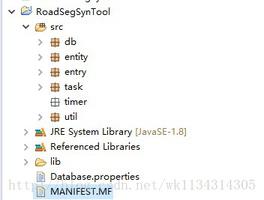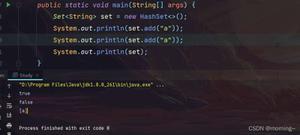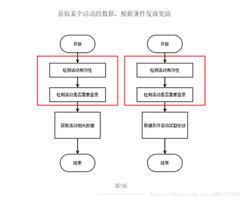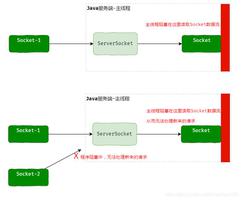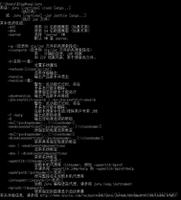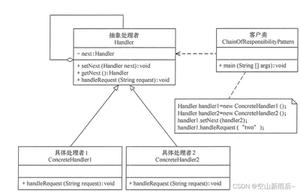Java计时新姿势StopWatch详解
一、最简单的计时
在我们的程序中不免需要对某一个运算或者方法进行计时,以便我们来观察该运算或方法是否符合我们的预期,所以在我们刚开始接触 Java 的时候都能写出类似下面这样的代码来计时:
public static void main(String[] args) {
Long startTime = System.currentTimeMillis();
doSomeThing();
Long endTime = System.currentTimeMillis();
Long elapsedTime = (endTime - startTime) / 1000;
System.out.println("总共耗时:" + elapsedTime + "s");
}
// 用于模拟一些操作
private static void doSomeThing() {
try {
Thread.sleep(1000);
} catch (InterruptedException e) {
e.printStackTrace();
}
}
事实上这样也并没有什么问题,并且也能够运行的很好,但是有一点不太好的就是,自己关注了太多输出的信息,下面我们来认识一种更优雅的一种计时方式;
二、StopWatch 类
想要使用它,首先你需要在你的 Maven 中引入 Spring 核心包,当然 Spring MVC 和 Spring Boot 都已经自动引入了该包:
<!-- spring核心包 -->
<dependency>
<groupId>org.springframework</groupId>
<artifactId>spring-core</artifactId>
<version>${spring.version}</version>
</dependency>
现在我们计时的姿势或许就会变成以下这样:
public static void main(String[] args) {
StopWatch clock = new StopWatch();
clock.start("开始任务一");
doSomeThing();
clock.stop();
clock.start("开始任务二");
doSomeThing();
clock.stop();
System.out.println(clock.prettyPrint());
}
// 用于模拟一些操作
private static void doSomeThing() {
try {
Thread.sleep(1000);
} catch (InterruptedException e) {
e.printStackTrace();
}
}
在最后我们使用 StopWatch 类自带的 prettyPrint() 方法类格式化我们的输出,运行程序你会发现你的程序输出了这样的东西:
StopWatch '': running time (millis) = 2009
-----------------------------------------
ms % Task name
-----------------------------------------
01005 050% 开始任务一
01004 050% 开始任务二
不仅有总用时,还有每个任务分别的占用时间和占用时间的百分比,这或许就会比我们自己输出要优雅那么一些;
StopWatch 类是怎么实现的呢?
当你戳开 StopWatch 的源码,你会在总共不到 200 行的代码里看到熟悉的东西:
public void start(String taskName) throws IllegalStateException {
if (this.currentTaskName != null) {
throw new IllegalStateException("Can't start StopWatch: it's already running");
} else {
this.currentTaskName = taskName;
this.startTimeMillis = System.currentTimeMillis();
}
}
public void stop() throws IllegalStateException {
if (this.currentTaskName == null) {
throw new IllegalStateException("Can't stop StopWatch: it's not running");
} else {
long lastTime = System.currentTimeMillis() - this.startTimeMillis;
this.totalTimeMillis += lastTime;
this.lastTaskInfo = new StopWatch.TaskInfo(this.currentTaskName, lastTime);
if (this.keepTaskList) {
this.taskList.add(this.lastTaskInfo);
}
++this.taskCount;
this.currentTaskName = null;
}
}
你会发现该类使用 LinkedList 实现了一个叫做 taskList 的队列,然后每一次开始同样也是使用 System.currentTimeMillis() 方法来获取时间,每次除了计算耗时也会构建一个描述当前任务的 TaskInfo 对象,并把它放入 taskList 队列中。
当执行 prettyPrint() 方法的时候,就从 taskList 队列中依次取出任务,然后做些格式化的操作:
public String shortSummary() {
return "StopWatch '" + this.getId() + "': running time (millis) = " + this.getTotalTimeMillis();
}
public String prettyPrint() {
StringBuilder sb = new StringBuilder(this.shortSummary());
sb.append('\n');
if (!this.keepTaskList) {
sb.append("No task info kept");
} else {
sb.append("-----------------------------------------\n");
sb.append("ms % Task name\n");
sb.append("-----------------------------------------\n");
NumberFormat nf = NumberFormat.getNumberInstance();
nf.setMinimumIntegerDigits(5);
nf.setGroupingUsed(false);
NumberFormat pf = NumberFormat.getPercentInstance();
pf.setMinimumIntegerDigits(3);
pf.setGroupingUsed(false);
StopWatch.TaskInfo[] var4 = this.getTaskInfo();
int var5 = var4.length;
for(int var6 = 0; var6 < var5; ++var6) {
StopWatch.TaskInfo task = var4[var6];
sb.append(nf.format(task.getTimeMillis())).append(" ");
sb.append(pf.format(task.getTimeSeconds() / this.getTotalTimeSeconds())).append(" ");
sb.append(task.getTaskName()).append("\n");
}
}
return sb.toString();
}
摁,新姿势 get √。
以上是 Java计时新姿势StopWatch详解 的全部内容, 来源链接: utcz.com/z/328424.html

